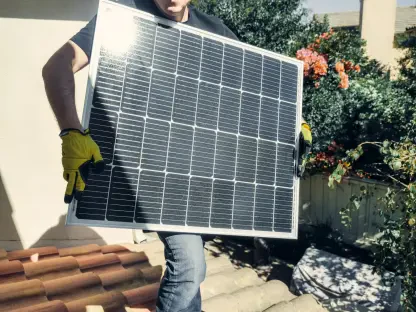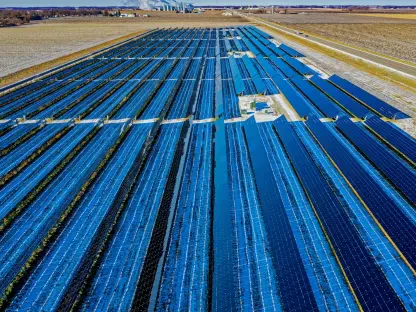The increasing push towards renewable energy has placed communities like Pulaski County in a challenging position, balancing the demands of modernization with preserving traditional community values. A notable example is the recent denial by the Pulaski County Board of Supervisors of a Special Use Permit for the Cicely Solar project. Proposed by One Energy Renewables, the project aimed to transform 31 acres of farmland on Black Hollow Road into a source of solar energy. This proposal was part of a larger 71-acre agricultural tract, but community concerns and broader county issues such as property rights, economic development, and environmental impacts led to its rejection.
Weighing Economic Benefits Against Community Values
Balancing Growth with Property Rights
Pulaski County’s rejection of the solar project has sparked a conversation about the implications of renewable energy on local communities. While the transition to renewable sources is often celebrated for its environmental benefits, concerns over property rights and economic consequences were at the forefront of this decision. Local residents worried about potential declines in property values, citing predictions of decreases between 20 to 30 percent if the solar project proceeded. This sentiment was based on local real estate opinions, despite contrasting views from outside experts like Rich Kirkland of Kirkland Appraisers, who maintained that such projects typically did not affect resale values. However, Kirkland’s lack of on-site assessment added layers to this complex dialogue, highlighting a divide between local intuition and external analysis.
In addition to property value concerns, the visual landscape of Pulaski County emerged as a significant focal point. The transformation of farmland into a solar farm was thought to impede the area’s natural aesthetics, a viewpoint passionately voiced by several local residents. Frank Drummond, the owner of the esteemed Rockwood Manor, underscored how the proposed development could obstruct the cherished “viewshed” of his property. Such arguments underscore an emotional connection to the land, reflecting a broader community apprehension towards altering the county’s rural character.
Economic Development or Environmental Preservation?
The debate extended beyond property boundaries, diving into greater economic considerations. The proposition of solar farms brings with it promises of economic growth through increased energy production and a potential for new jobs. However, the economic boon must be weighed against possible downsides such as altering the traditional agricultural use of the land. Some within the community, like Cecil King, exhibited support for integrating solar panels with agricultural practices, such as sheep grazing, suggesting a harmonious blend of old and new economies. Yet, this perspective remained a minority voice against a backdrop of broader skepticism towards altering land usage deemed essential to Pulaski’s identity.
From the county’s governance standpoint, the decision reflects their conservative approach to renewable ventures. As Supervisor Dirk Compton articulated, it is vital to consider solar projects’ long-term impacts before diving into large-scale implementations. This cautious stance is echoed in the county’s handling of previously approved projects, which, despite spanning 2,500 acres, have yet to see tangible development. Supervisor Laura Walters, however, championed the potential benefits, emphasizing empowered property rights and an augmented energy supply for the county’s future. Her rationale points to an undercurrent of progressive views that aim to cultivate innovation without sacrificing autonomy.
Environmental Concerns and Community Sentiment
Navigating Environmental Impacts
Environmental issues have been pivotal in Pulaski County’s decision-making process regarding the Cicely Solar project. Concerns about ecological repercussions are a recurrent theme in community opposition to such projects, a fear not unwarranted given the potential for landscape alteration. Notably, George Stevenson, a geologist in the community, raised an alarm over sinkhole formations, a geological hazard that could result from the installation of solar infrastructure on the existing farmland. These apprehensions were intertwined with the visual impact of a solar farm, adding to the complexity of evaluating the project’s broader environmental consequences.
The community’s unease reflects a hesitance to shift from established agricultural uses to industrial ones, even under the environmental pretext of renewable energy benefits. The intersection of maintaining environmental quality and adapting to clean energy solutions remains a delicate balancing act. The preservation of pristine landscapes, an intrinsic value among Pulaski residents, becomes both a foundation and a challenge in navigating progress. Such aesthetic and ecological considerations are crucial for understanding the nuanced perspectives that shape the ongoing dialogue between adherence to tradition and embracing new technological frontiers.
Public Hearing and Community Input
The public hearing that deliberated the Cicely Solar project’s future was marked by passionate pleas both for and against the initiative. The discussion provided a platform for a mosaic of community voices, with significant portions of the population aligning against the proposal. Among the dissenting voices, preserving natural beauty, property rights, and rural integrity was a recurring refrain. However, the hearing was not devoid of supporters—though infrequent, proponents welcomed potential synergies between renewable energy and local agriculture, underlining the innovation possible when environments and technology collaborate thoughtfully.
The county supervisors’ ultimate decision to reject the permit showcases a more traditional stance toward development, reflecting a priority placed on immediate cultural and environmental priorities over promises of future returns pushed by external pressure. Balancing direct community sentiment with long-term strategic growth remains an ongoing challenge for supervisors, illustrating the tension that consistently accompanies the introduction of novel concepts into conventional settings. The overriding consensus within the board mirrored a wariness towards change, at least until existing questions surrounding community impact could be resolved satisfactorily.
Community and County Forward Motion
Additional Initiatives and Ongoing Projects
Beyond solar energy debates, Pulaski County continues to engage with broader development matters signaling its dedication to both progress and preservation. Other subjects on the board’s recent agenda highlighted this dynamic, including the rezoning of land owned by Jeff and Ann Reeves to facilitate future developments. Additionally, plans to open a Sportsplex underscore the county’s commitment to enhancing local amenities, focusing on community welfare and supporting infrastructural growth in parallel with other considerations.
Moreover, environmental advocacy took center stage in Pulaski’s ‘One Bag Challenge,’ a community-driven cleanup initiative symbolizing the county’s ongoing commitment to sustainability. These efforts underline that while renewable energy projects present headline challenges, the county’s broader strategy involves numerous layers of development, addressing immediate needs alongside future aspirations.
Reflection on Future Directions
With the ongoing momentum toward renewable energy, communities like Pulaski County face challenges in balancing progress and preserving traditional values. A notable instance is the Pulaski County Board of Supervisors’ recent decision to deny a Special Use Permit for the Cicely Solar project. Proposed by One Energy Renewables, this initiative intended to convert 31 acres of farmland along Black Hollow Road into a solar energy source. This parcel is part of a broader 71-acre agricultural tract. The project’s rejection stemmed from community concerns and wider county issues, including property rights, economic growth, and environmental effects. The denial reflects a broader struggle experienced by rural communities like Pulaski County, which must navigate the complexities of adopting new technologies while respecting longstanding ways of life. Such decisions illustrate the intricate and often contentious process of integrating modern energy solutions within communities committed to safeguarding their heritage and environment.









